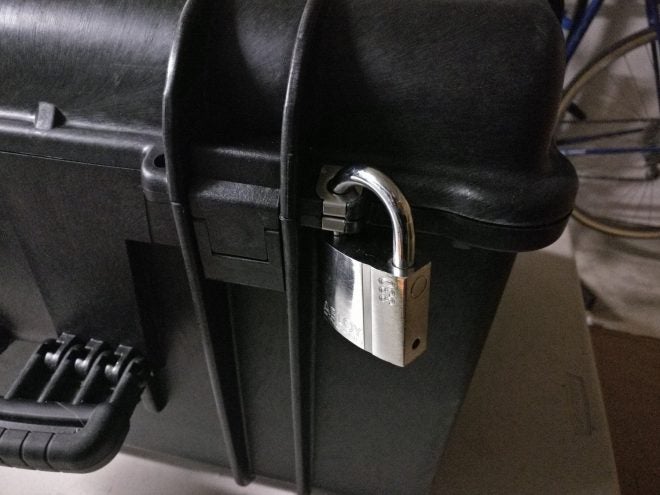Regular TFB readers know me as the “Flying with Firearms” (Part 1, Part 2, Part 3) subject matter expert, and it comes as no surprise to most folk here that I have logged hundreds of thousands of air-travel miles with my luggage. While this is typically an uneventful process, over the years I have had gun cases subject to more rough handling than most individuals would wish upon their worst air-traveling enemy. Given that I want my firearms (as well as my laptop, my sundry kit, my clothes, and whatever bottle of whiskey is in my bag) to arrive in one piece, I’ve also become very well-versed in the world of luggage selection. Because of this experience, I was given the opportunity to review an Explorer Cases 5833.
My luggage has run the gauntlet. I have used everything from expensive Rimowa cases to the most economical option at Costco. But, as folk will likely recall from my previous articles, in the past decade I had settled mostly on Pelican cases. Photos of these appeared in my previous installments… sometimes showing successful travel results and sometimes showing what happens when things go wrong.

A broken hasp on one of the author’s Pelican cases, which has been subject to repeated repair attempts.
Among my chief complaints with Pelican cases that I have owned in the past has been the weakness in the construction of the hasps… the points where padlocks are affixed to secure contents.
Naturally, then, I was excited when the editors here at TFB encouraged me to consider looking into the offerings from Explorer Case. When they have deployed downrange, it’s been Explorer Case products that many of them have trusted to keep their gear protected in transit.
With a number of my current luggage cases down for repair, I was glad to take this opportunity to try out some new hardware on my travels. Recently, an Explorer Case 5833 arrived just in time for me to load it full of guns, clothes, etc. and make my way to Florida, North Carolina, and Oregon this month.

Both the hinge and hasp assemblies are extremely robust on Explorer Case products
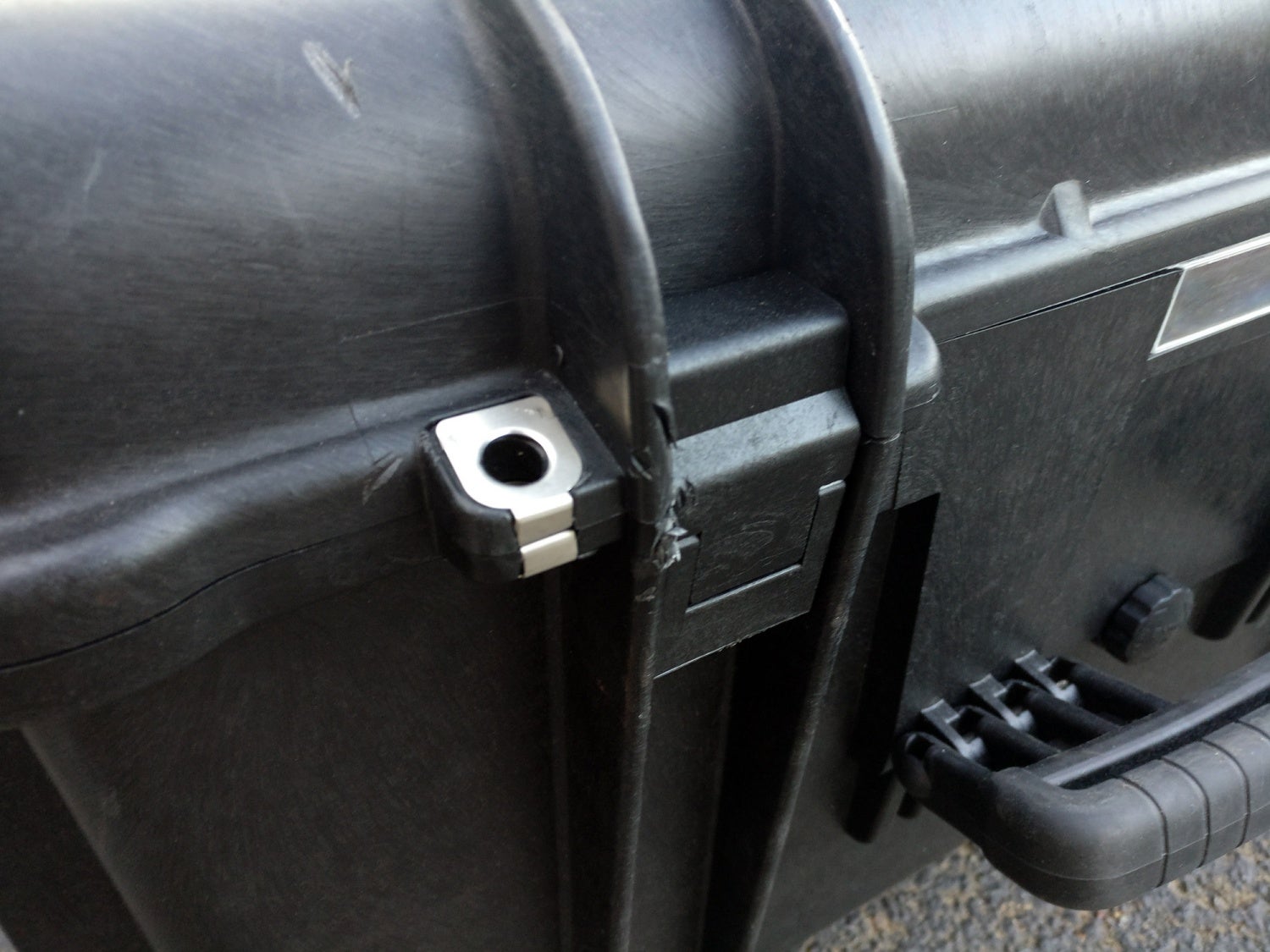
This author is confident that it would take a heck of a lot of rough handling by an entire army of TSA goons to break these metal-reinforced hasps on the Explorer Case

Similar to competing products on the market, Explorer Case uses rubber over-molding their main carry handle. The easy-to-populate clear plastic nameplate holder can display identifying details on a paper tag which is easily inserted but which cannot easily be removed unless the case lid is opened.
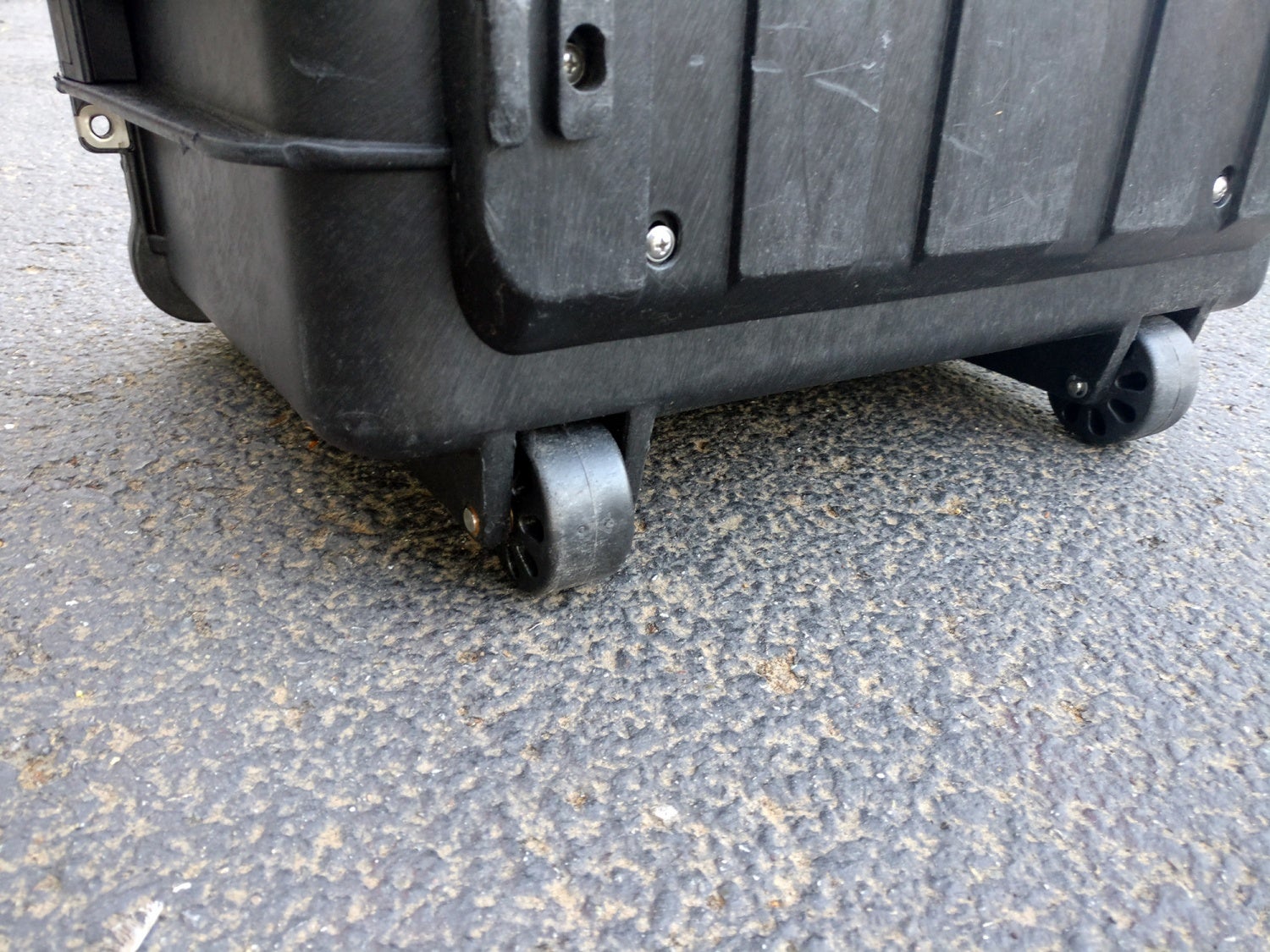
The author found that the wheels and wheel bearings on the Explorer Case were comparable to others on the market and that the unit rolled smoothly, even with heavily-laden with gear.

The author’s new Explorer Case (left) next to his one remaining Pelican Air case (right) as he prepares to surrender them to the TSA and his air carrier’s luggage throwers.
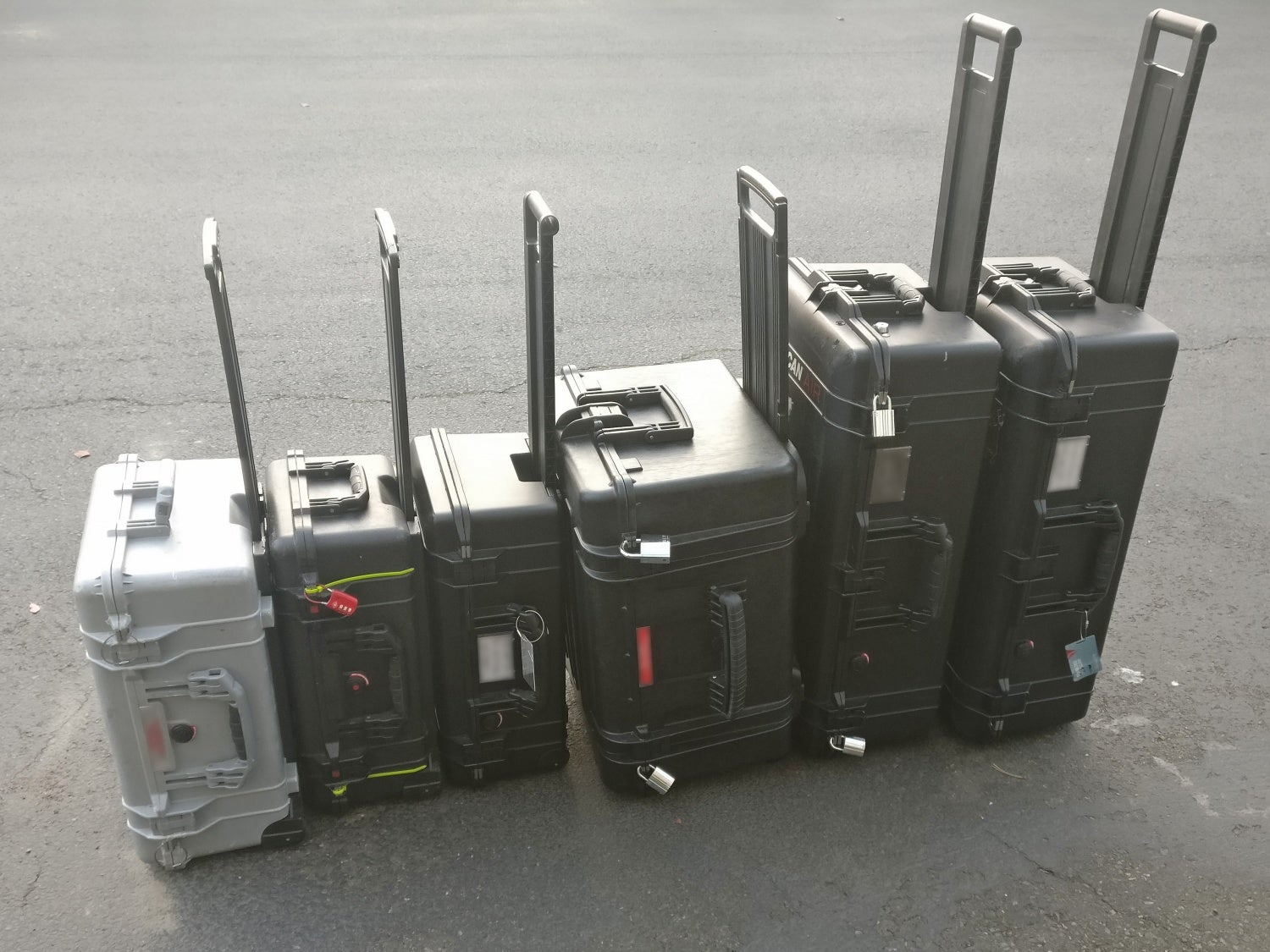
The Explorer Case model 5833 is positioned as a strong contender to compete with a variety of other products on the market. It is seen here in the very middle of a line of various Pelican Protector, Pelican Storm, and Pelican Air cases owned by the author and his team.
Right out of the box, it was clear that these cases are designed with extreme ruggedness in mind. “Built stronger to last longer,” is their tagline, and Explorer advertises their wares as “virtually indestructible.”
Now, it should be mentioned right off the bat that this additional protection and durability comes at a cost. Not necessarily a financial cost, mind you. Most Explorer Case products are actually priced more competitively than comparably-sized offerings from other vendors. No, the cost to which I am referring is regarding weight.
The Explorer Case is not only more than eight pounds heavier than my old Pelican Air, but the former even manages to be nearly four pounds heavier than the original Pelican Protector I used for years, which was one heavy beast.
Inspired by TFB’s own James Reeves and his absolutely stellar handgun size spreadsheet, I tabulated some figures comparing:
- the older generation Pelican Protector cases I used to use
- the new Pelican Air product line to which my team all migrated
- the Explorer Case 5833 in this review
One of the most valuable elements of the research James has amassed, and something I’ve sought to duplicate here is the ability to go beyond mere stats of stock dimensional figures and to allow for calculations and comparisons of data that is truly relevant to users. Much like his “rounds per ounce” figure, I sought to compare both the capacity as well as the weight and examine the cases’ cubic inch per pound attributes… exactly how much can a person carry while being subject to the constraints of the case weight itself?
Here is where we truly see the innovation in the construction of Explorer Cases products.

Table of weights and size of Explorer Cases 5833 compared to Pelican 1610 and Pelican Air 1615.
Both the Pelican Air 1615 and the Explorer Cases 5833 are clearly designed to butt right up against the maximum size limit that nearly all commercial air carriers will accept as “standard size” luggage without charging overage fees. (All three exterior dimensions are totaled, and this sum must be less than 62” overall for a luggage piece to qualify as not being oversize.) However, due to the geometry choices that Explorer has made (opting to fabricate their luggage closer in shape to a cube) they are able to afford users an additional 830+ cubic inches of internal capacity beyond the competing Pelican Air while keeping within the same lenth+girth dimensional limits.
If pure, raw capacity of space is what matters to you the most, the answer is clear: Explorer Cases. The Explorer Cases 5833 is a solid option for many roles while still being suitable for air travel if the need arises. My editor stated that he’s looking to use one as a vehicle storage option and I wholeheartedly agree that it is ideal for this role. Likewise, for servicemembers or other folk heading downrange (especially on travel where other parties oversee the logistics of case transit) the Explorer’s weight is not as much of a hinderance and its capacity and extreme ruggedness is likely to be very valuable.
Alternately, if you fly constantly and are looking for luggage suitable for mostly metropolitan travel wh ile remaining able to easily and legally secure firearms in transit as well as in a hotel room, then the Explorer Cases 5833 will fit the bill, but its extreme weight tradeoff may not bring as many benefits to you as others may require. I am likely to still rely on my old Pelican Air 1615 for much of my domestic flying.
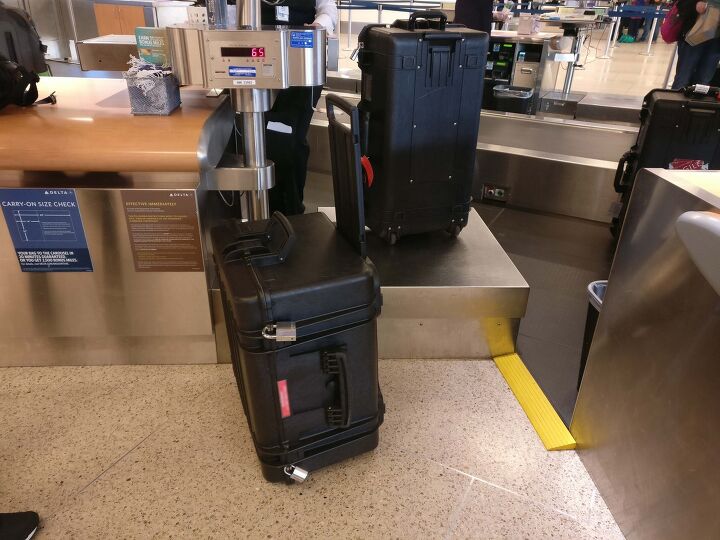
The author’s Pelican Air case weighed in at 65 lbs… that included a rifle, a pistol, some clothes, boots, and so forth. A similar compliment of personal effects was packed into the Explorer Case, as well.
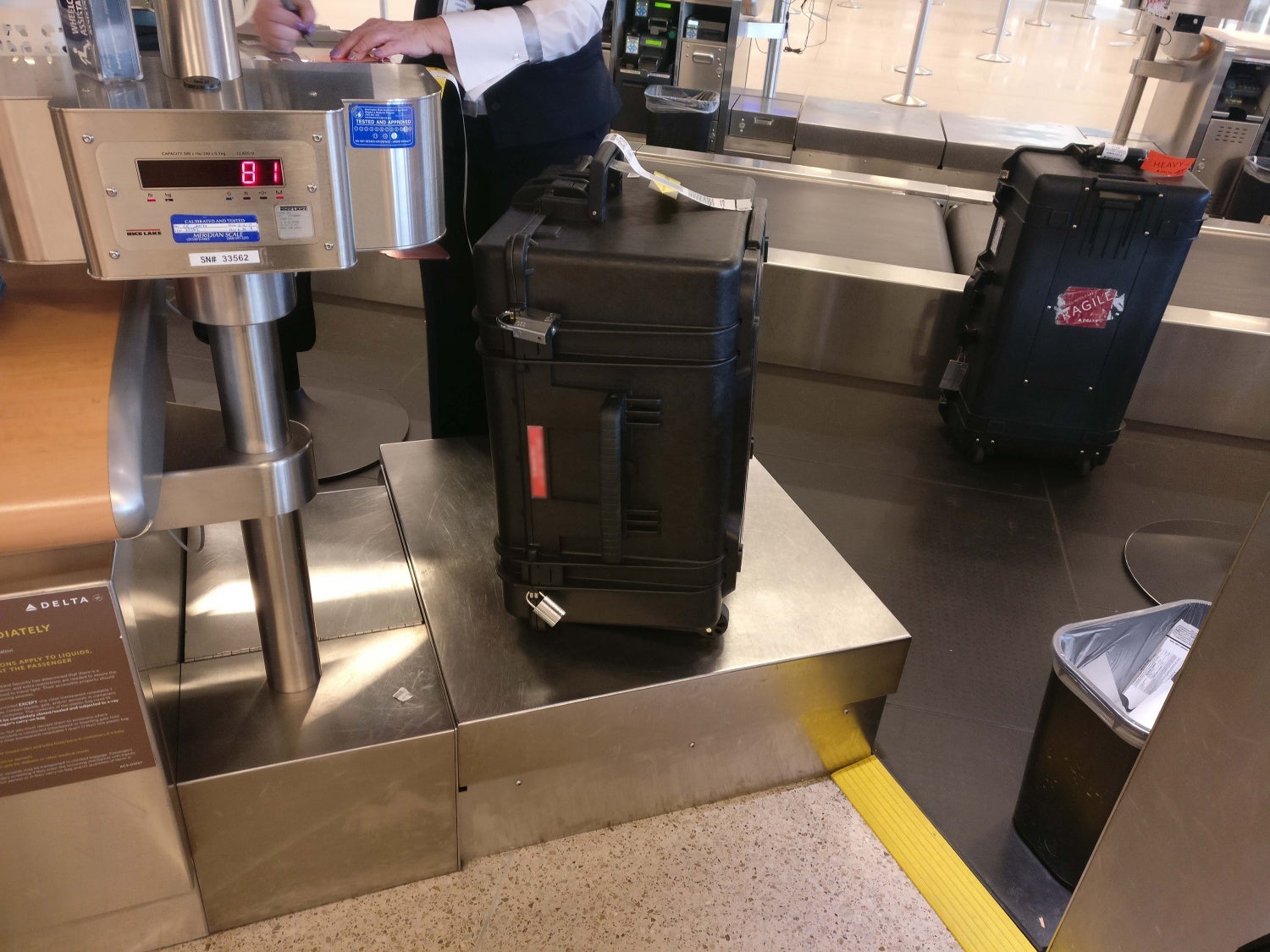
The Explorer Case weighed in at 81 lbs… this case also included a rifle, a pistol, some clothes, a laptop, and so on. Some deft social engineering was the only thing that saved the author from paying an additional $125.
Many of us tend to be extreme in our tastes and our equipment needs. While most civilians are quite content to use “typical” luggage, TFB readers are anything but typical. Conventional luggage often doesn’t cut it for us. All the cases being discussed here defy classification as conventional travel bags. They are more akin to transport cases (hard-sided, watertight, folding handles on multiple sides for two-man-lift) while offering some features that make them vaguely luggage-like (roller wheels, collapsible handles, name tag inserts) should the need arise to press them into service on a business trip.
Which direction you ultimately decide to go in this gray zone depends on which side of the line you consider your true home. Are you a jet-setter (typically traveling alone and responsible for your checked luggage) who sometimes needs to transport guns or go to rough areas? Or are you an operator or servicemember (typically traveling on orders with a team shipping your gear) who sometimes needs to fly for business when the need arises?
Ultimately, the Explorer Cases line of products falls more into the “special role” application than “everyday civilian traveler” needs may require. The weight cost may impact some frequent fliers in their wallet.
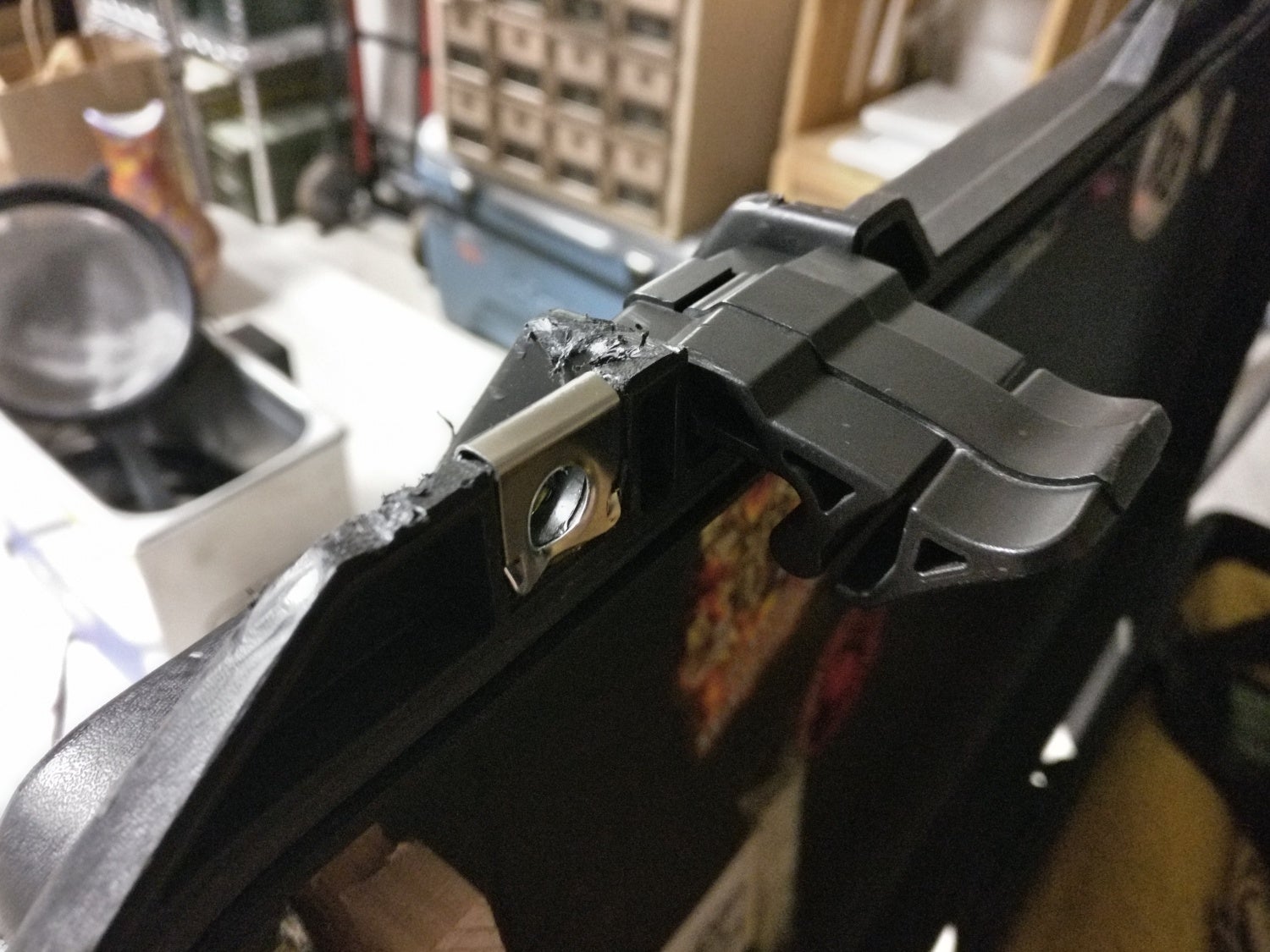
Here we see the Pelican Air’s biggest failing… those padlock hasps just get utterly wrecked during air travel. The Explorer Case appears to be far more well-built in this regard.
Whether you’re traveling via air or you’re shipping your luggage with a cargo crew or you’re leveraging cases as a locking solution in the bed of a truck (or a roof rack)…
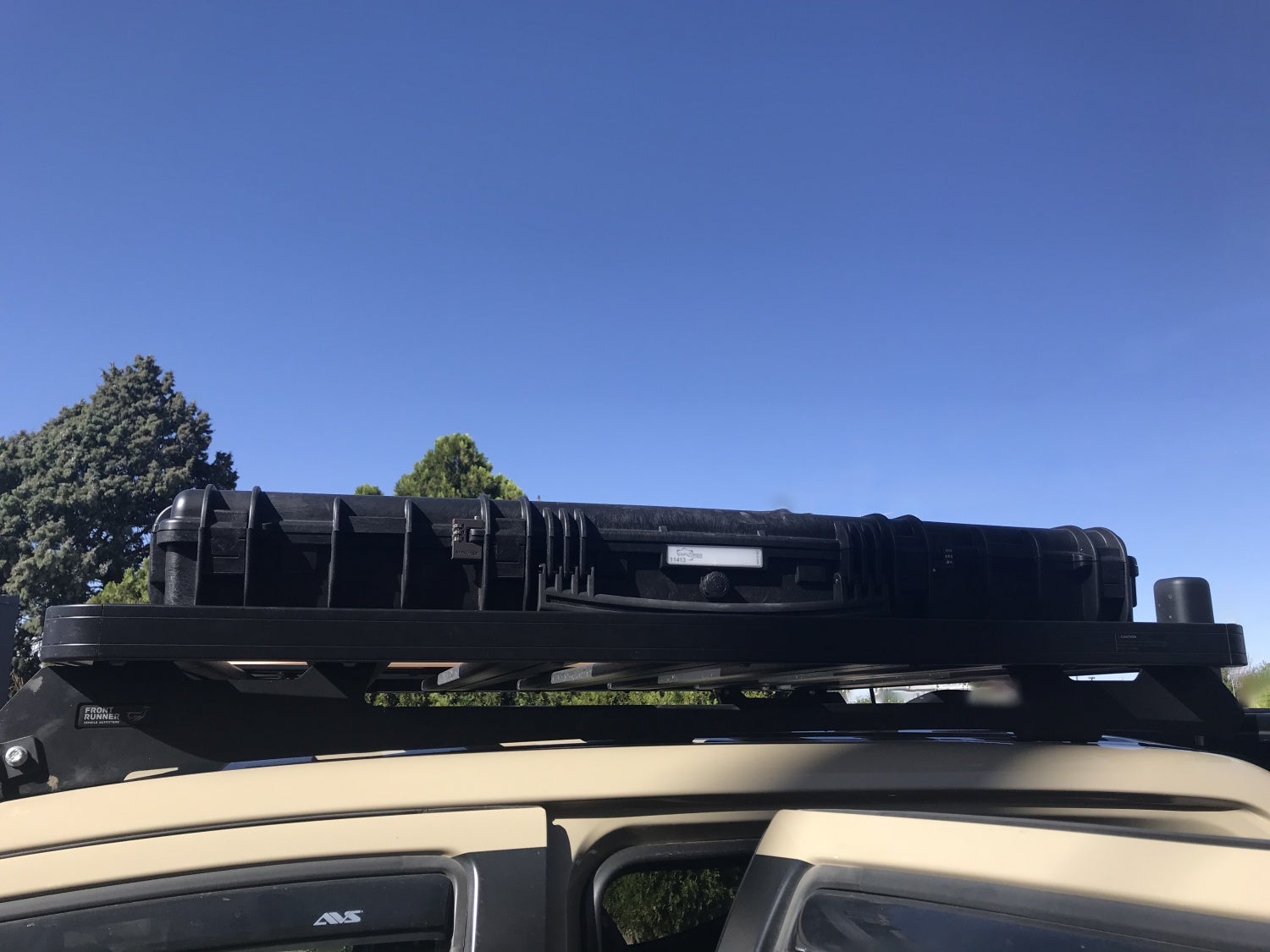
Explorer Cases are rugged enough to be run bolted to a roof rack on a truck and kept outside.
Most of us who plan to put guns into such a case are going to want to lock them up. For this reason, I was excited about the fact that Explorer Cases appeared to offer custom-designed padlocks made to fit specifically around the trapezoidal shape of their case hasps. I sought examples of all three locks that they offer.
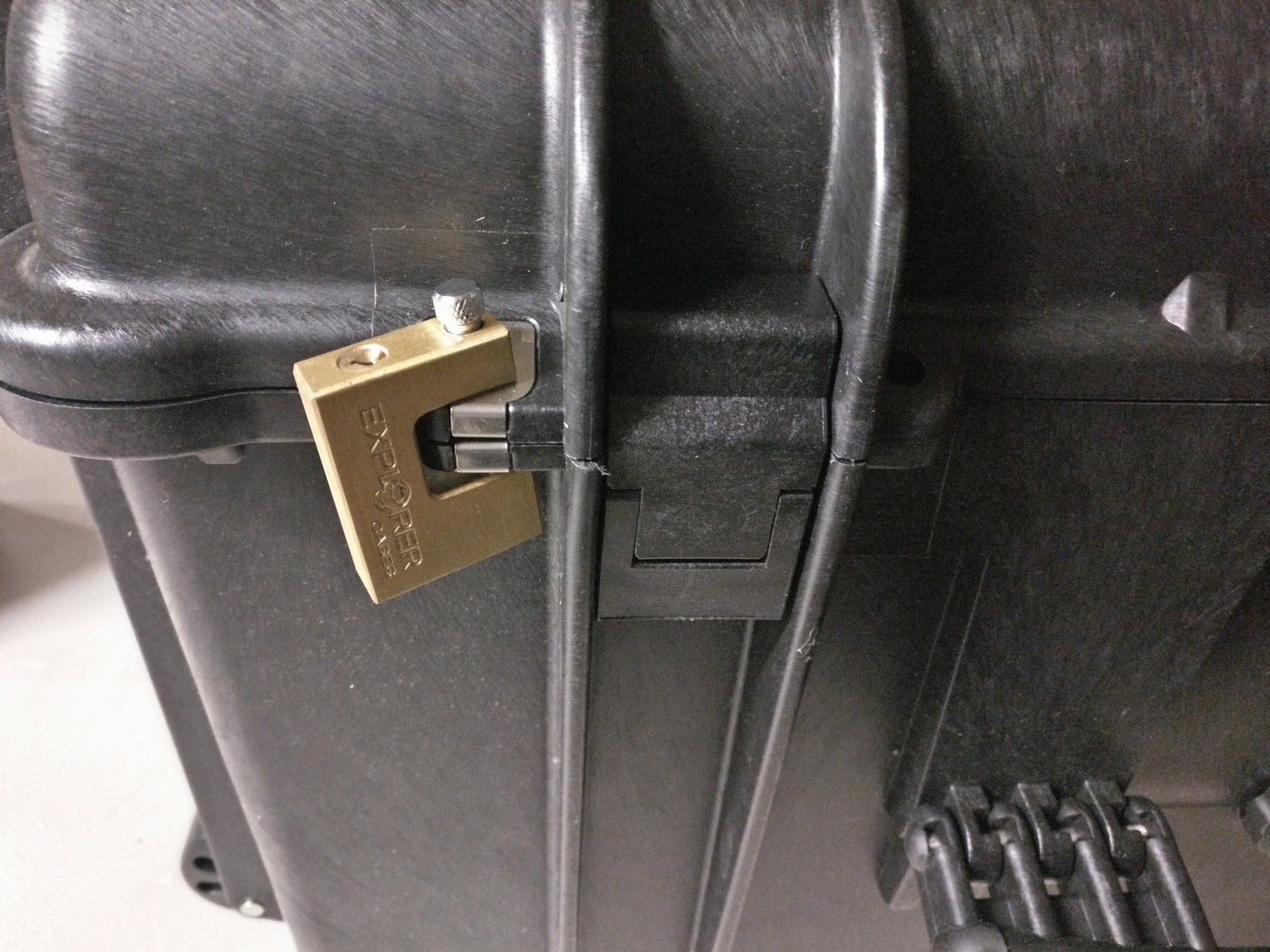
Brass keyed padlock affixed to a metal hasp
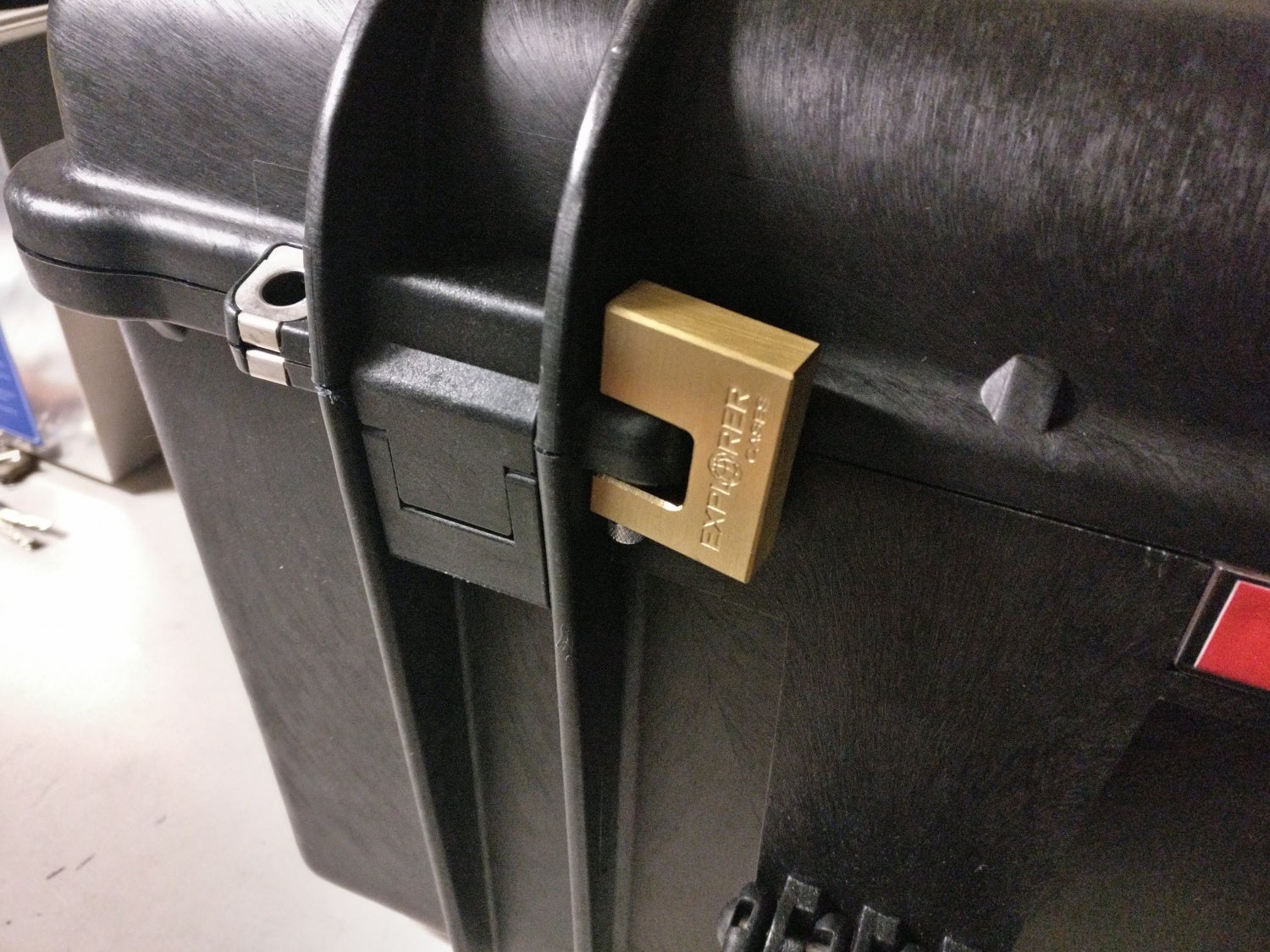
Brass keyed padlock affixed to a plastic hasp
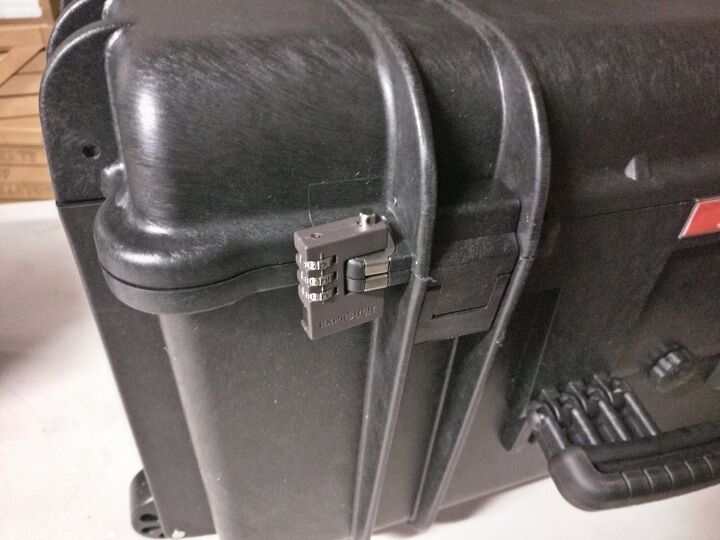
Black combination padlock affixed to a metal hasp
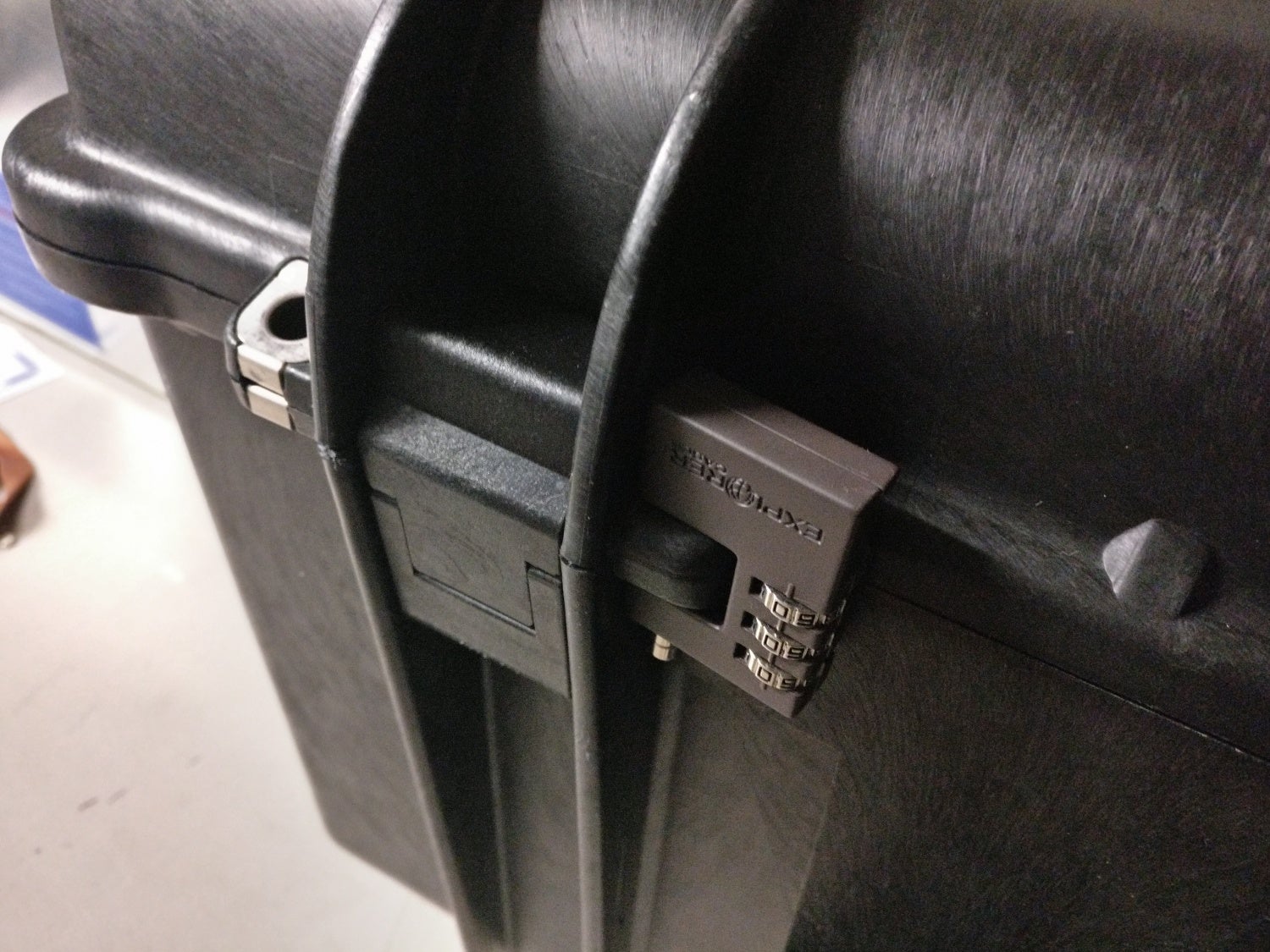
Black combination padlock affixed to a plastic hasp
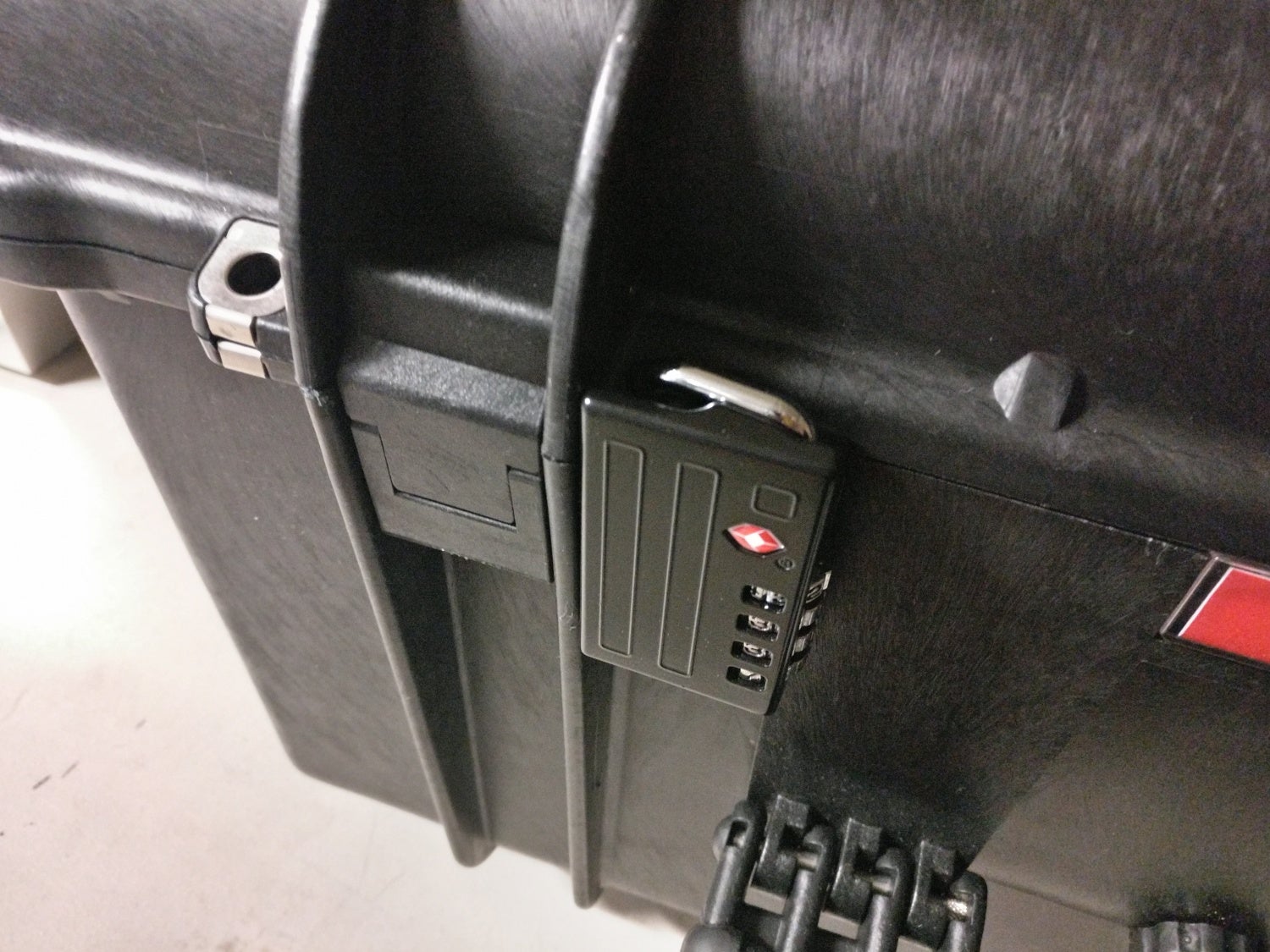
TSA compatible padlock affixed to a hasp
Ultimately, while the Explorer Cases line of products shines in a great variety of ways, none of the associated padlocks sold by the company appear to meet the same standards of rigor and strength as their cases. All of the padlocks were found to fit on the case in a manner that would not be described as “snug” and tended to wiggle and wobble on the hasps. The smaller plastic hasp of the Explorer Case offered a slightly tighter fit but the padlocks were still imperfect. The metal-reinforced hasps are where one would truly want to secure a lock, particularly if transporting firearms. These larger hasps (designed to accommodate proper, heavy-duty padlocks) offer an even looser fit with Explorer’s own locks.
This short video shows the manner in which all three padlocks fit on the hasps of Explorer Cases 5833 and also documents a variety of attacks against them.
Thankfully, the Explorer Cases products all easily support the application of proper, heavy-duty padlocks on their hasps and this was the manner in which I have been traveling. For securing firearms — either in the belly of a plane or in the back of a pickup — pairing an Explorer Case with some solid padlocks (like my beloved Abloy Protec PL330s) is likely your most robust option.
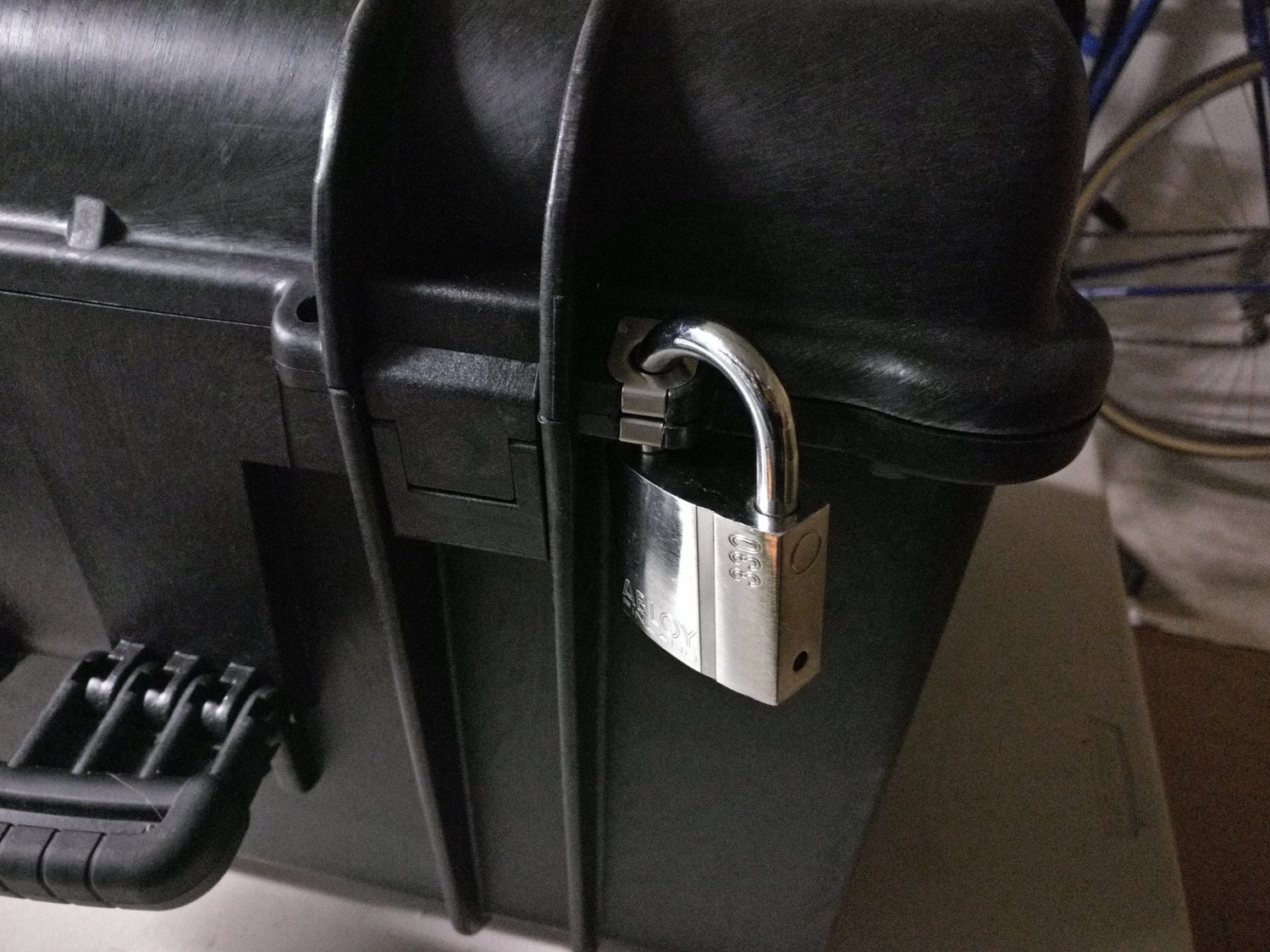
Abloy Protec PL330 affixed to one of the metal-lined hasps on the Explorer Case 5833
Even though it’s very heavy, I plan to keep trying the Explorer Case for a while. It may cost me more in luggage fees due to overweight bags, but I’ll be amazed if the TSA or the airlines manage to damage it… that’s for sure.

Explorer Case 5833 on the TSA’s inspection table next to the author’s old Pelican Air 1615… both of which sport Abloy Protec padlocks
You can find more information about Explorer Cases at https://www.explorercases.net
 Your Privacy Choices
Your Privacy Choices
